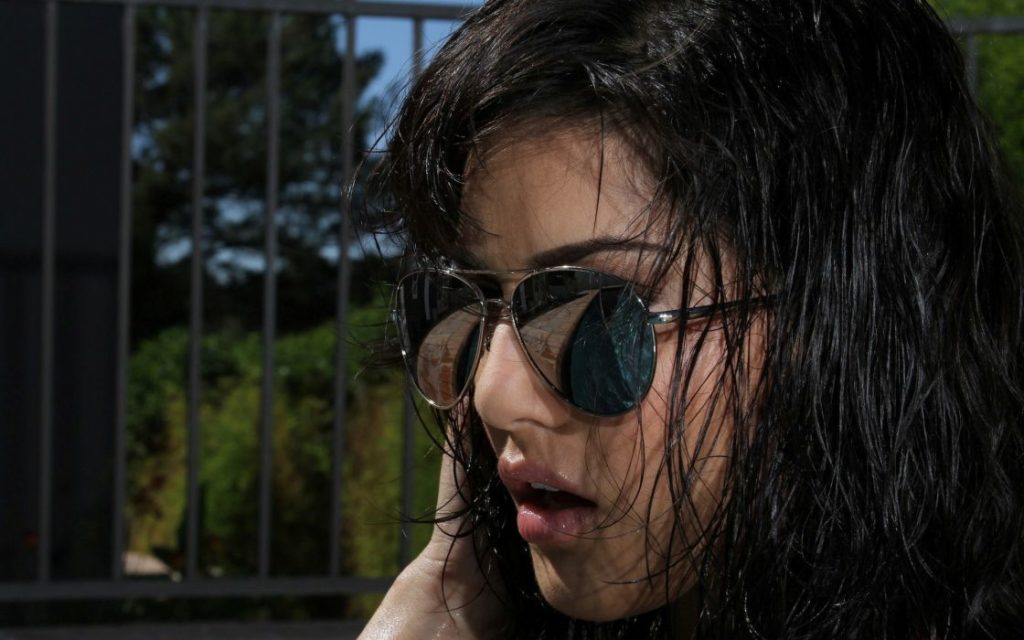
Sunglasses are not just a fashion accessory. However, in order for this statement to be true, they must have really high-quality glasses – ones that really protect the eyes from the sun’s ultraviolet radiation. Otherwise, the harm will outweigh the benefits: the pupil, “deceived” by the glasses, will not shrink from the light and the eye will receive an additional dose of radiation, which can gradually lead to retinal burns and even blindness.
It is best to forget about cheap (in most cases, of course, Chinese) imitations! Choose between glass and plastic glass with different degrees of tinting and color of the glass. And the choice of the frame depends entirely on the shape of your face.
If you do not feel prepared to make the choice yourself, consult an ophthalmologist or the consultant in the store.
Glass or plastic?
Glass lenses provide guaranteed protection from ultraviolet radiation and do not scratch (of course, if you do not try them, rubbing them with other glass or metal, for example). Plastics are lighter and thinner, and modern coatings also allow them to be very scratch resistant. However, let’s not be fooled – even the best quality plastic needs careful treatment.
Degree of eclipse
Quality glasses must be accompanied by a label indicating the percentage of UVA and UVB radiation and the wavelength blocked by the glasses.
The waves are measured in nanometers and 100% protection is given by the glasses marked 400 nm. If the number is lower, then the glasses transmit part of the ultraviolet radiation.
There are 5 degrees of tinting of the glass – from very bright – transmitting 80-100% of light, which protects the eyes from ultraviolet radiation only in cloudy weather, to very dark, which transmits only 3-8% of light. For urban conditions are best-suited glasses that transmit light from 18 to 43%, for the prolonged and strong sun – no more than 18%, but for example for a mountain resort in winter you need very dark glasses, which are often mirrored and with really serious protection.
Sunglasses with very low bandwidth are not suitable for driving.
You can buy the so-called “Chameleons” – glasses that change depending on the brightness of the light. They do not need to be removed even in a dark room, because in it they become absolutely transparent.
The color of the glass
Orange and red, which are quite fashionable, are too aggressive for the eyes and have been found to even affect the psyche. Yellow is too bright for sunlight, and blue is well tolerated by very few people.
The most suitable and safe are the gray, green, and brown colors of the glasses – they best absorb the radiation and even soothe the eyes.
Keep in mind that the color of the glass should be even because otherwise, the eyes get tired.
The size
The general rule is that the glasses should be larger. But the best choice is goggles that make their owner look like a skier. The frames should be wide and hide the eyes on both sides.
Unfortunately, from an aesthetic point of view, huge glasses do not go at all. And many prefer to wear glasses with a thin frame. However, it should not be forgotten that small glasses that do not completely cover the eyes are bad glasses. They are of little use – if light enters the eye, all protections are irrelevant.
The frame
There are no rules here and all recommendations would be subjective. Just take your time and try on as many frames as possible. It all depends on your taste, the money you can spend, and of course on your individual characteristics. Everything is strictly individual: some have an allergy to metal, others have long lashes resting on too flat glasses. If you often suffer from headaches, you can make glasses with leather frames on the side. They are softer than metal and plastic and you will feel more comfortable.
If you have vision problems, you can wear contact lenses and buy sunglasses to your liking, especially since ophthalmologists have recently recommended just that.







